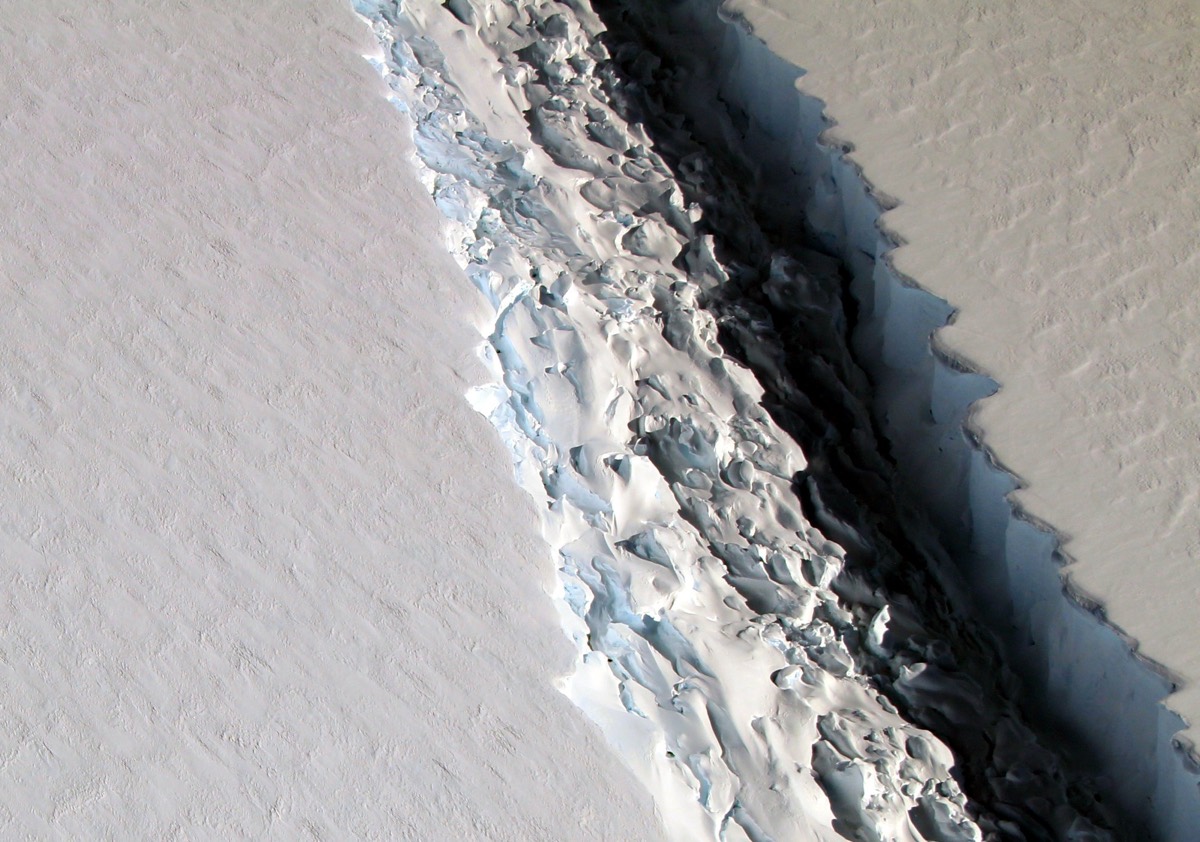100-Mile-Long Crack in Antarctic Ice Shelf Keeps Growing

A massive iceberg the size of Delaware is now even closer to breaking free from Antarctica, due to a widening crack in the ice shelf, scientists report.
The Larsen C Ice Shelf in Antarctica is cut through by a growing rift, which stretches nearly 109 miles (175 kilometers) long, new satellite data has revealed. Already in 2017, the rift has grown by 6.2 miles (10 km), and now only 12.4 miles (20 km) of ice are anchoring the massive iceberg to the ice shelf, according to Project MIDAS, an Antarctic research project based in the United Kingdom.
It's not a matter of if the iceberg will break off (an event known as calving), but when, scientists warn. According to MIDAS researchers, when the iceberg separates, the Larsen C Ice Shelf will lose more than 10 percent of its area — about 2,000 square miles (5,000 square km). The resulting iceberg would be one of the largest in recorded history, the scientists said. [Images of Melt: Earth's Vanishing Ice]
"This event will fundamentally change the landscape of the Antarctic Peninsula," MIDAS researchers wrote in a blog post. "We have previously shown that the new configuration will be less stable than it was prior to the rift, and that Larsen C may eventually follow the example of its neighbor Larsen B, which disintegrated in 2002 following a similar rift-induced calving event."
As the South Pole's fourth-largest ice shelf, the Larsen C Ice Shelf holds back many land-based glaciers just behind it, according to scientists. If the ice shelf deteriorates as the Larsen B Ice Shelf did in 2002, those slow-flowing glaciers will have one less barrier in moving toward the ocean.
The Larsen C rift was first noticed by MIDAS researchers in 2014, and has been monitored by satellites and other instruments ever since. In November 2016, NASA's IceBridge mission observed the immense crack, which then measured 70 miles (112 km) long, 300 feet (91 meters) wide and about one-third of a mile (0.5 km) deep.
Given the rate at which the rift is growing, the iceberg could break away early this year, MIDAS researcher Adrian Luckman, a professor of glaciology at Swansea University in the United Kingdom, told BBC News.
Get the world’s most fascinating discoveries delivered straight to your inbox.
"Although you might expect any extension to hasten the point of calving, it actually remains impossible to predict when it will break because the fracture process is so complex," Luckman told BBC News. "My feeling is that this new development suggests something will happen within weeks to months, but there is an outside chance that further growth will be slow for longer than that."
Original article on Live Science.



